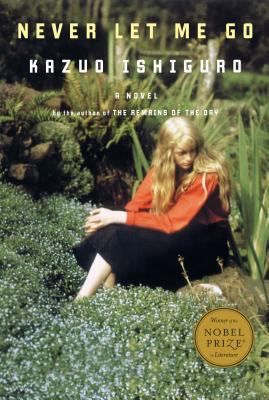
Introduction by Librarian
The novel "Never let me go" explores not only the ethical issue of human cloning and organ donation, but also the struggle with loss and love, despair and hope in an uncaring world.
Set in a boarding school in late 1990s England, the children are raised and sheltered entirely from the outside world and the full truth about their eventual purpose until one day a teacher accidentally reveals the tragic truth to them: “None of you will do anything, except live out the life that has already been set out for you. You will become adults, but only briefly. Before you are old, before you are even middle-aged, you will start to donate your vital organs. That’s what you were created to do. And sometime around your third or fourth donation, your short life will be complete...” These children are just too young to understand this piece of information at that moment but eventually accept their fate when they grow up. They are cloned and just being treated as body parts rather than as human beings even though they have souls and emotions as normal people do.
The story begins with Kathy who flashes back her seemingly happy childhood in the boarding school, her friendship and love triangle with her classmates Ruth and Tommy who inevitably die from organ donation, her profession as a carer who takes care of dozens of organ donors, and her search for self-identity. Back in the present day, Kathy is told to end her work and is about to make her first donation herself as she is supposed to be.
This novel was shortlisted for the 2005 Booker Prize and followed by a film adaptation released in 2010.
Set in a boarding school in late 1990s England, the children are raised and sheltered entirely from the outside world and the full truth about their eventual purpose until one day a teacher accidentally reveals the tragic truth to them: “None of you will do anything, except live out the life that has already been set out for you. You will become adults, but only briefly. Before you are old, before you are even middle-aged, you will start to donate your vital organs. That’s what you were created to do. And sometime around your third or fourth donation, your short life will be complete...” These children are just too young to understand this piece of information at that moment but eventually accept their fate when they grow up. They are cloned and just being treated as body parts rather than as human beings even though they have souls and emotions as normal people do.
The story begins with Kathy who flashes back her seemingly happy childhood in the boarding school, her friendship and love triangle with her classmates Ruth and Tommy who inevitably die from organ donation, her profession as a carer who takes care of dozens of organ donors, and her search for self-identity. Back in the present day, Kathy is told to end her work and is about to make her first donation herself as she is supposed to be.
This novel was shortlisted for the 2005 Booker Prize and followed by a film adaptation released in 2010.

